On September 26 at the Cosmoverse conference, the whitepaper of Cosmos' ATOM 2.0 upgrade was officially announced. Completed by Buchman, Manian, and eight other key figures from Cosmos, the 27-page document provides information about Tokenomics with ATOM and a range of proposed new features for the Cosmos Hub.
New features for Cosmos Hub
Interchain Scheduler and Interchain Allocator - Cosmos' New Economic Engine
Interchain Scheduler will act as a MEV (Maximum Extractable Value) solution - extract maximum value from multiple domains, at the same time Scheduler will also act as a secure block space marketplace in an ecosystem formed from asynchronous marketplaces linked by IBC. Interchain Allocator will bring the function of coordinating the economy of projects in Cosmos by attracting users, liquidity and long-term ecosystem linkage by establishing multilateral agreements with chains and entities supporting ATOM-based IBC while also automating asset portfolio management, reserve balancing and collateral diversification support to promote ATOM as the reserve currency for Interchain.
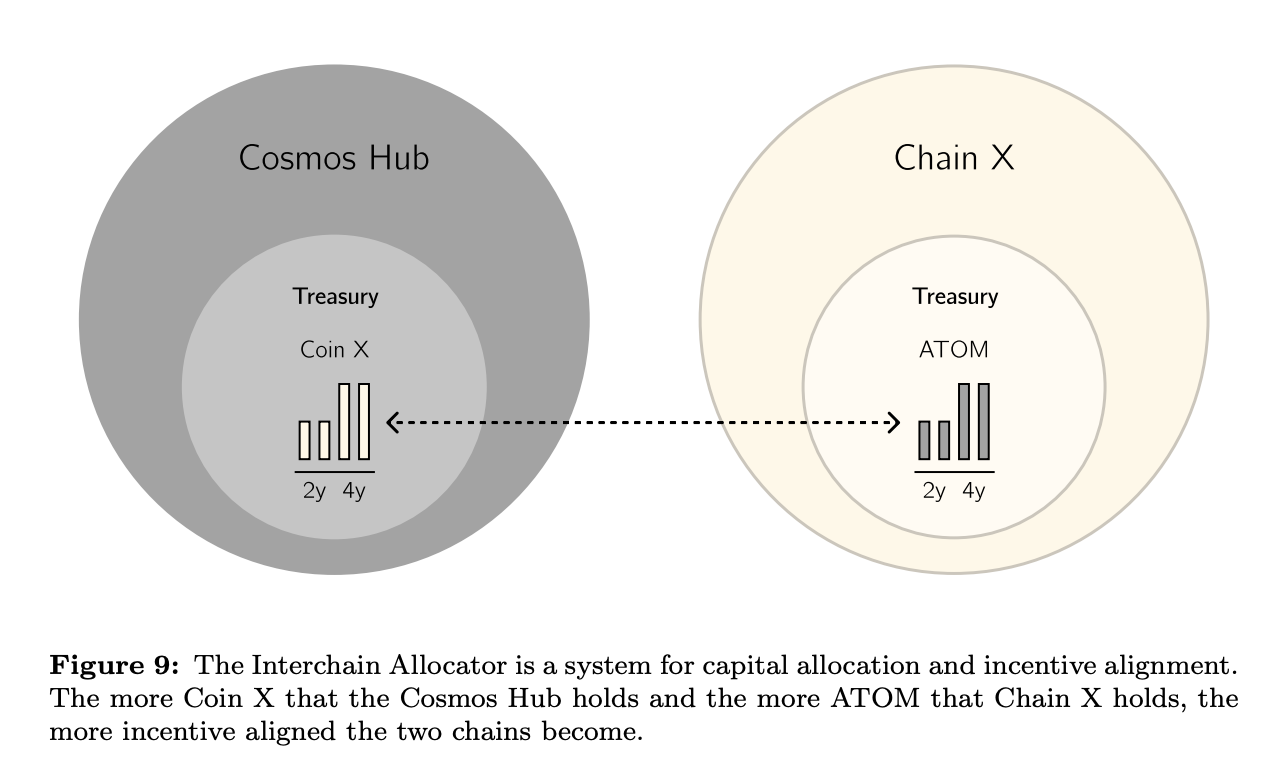
Interchain Allocator will allocate funds according to the principle: The more ATOM chain X holds and the more coins X (of chain X) holds, the more linkages between the two chains will be promoted.
Scheduler and Allocator will work together to form the flywheel for Cosmos' new economic engine
Cosmos Hub collects revenue from economic activity in Interchain from the block space market handled by the Scheduler, in an interchain market like Cosmos, the revenue generated by the Scheduler will be generated and liquidated continuously. The revenue will then be used to promote long-term ecosystem alignment and bring projects with promising potential to Cosmos Hub assets through Allocator. In turn, these new projects will expand the operating market for the Scheduler.
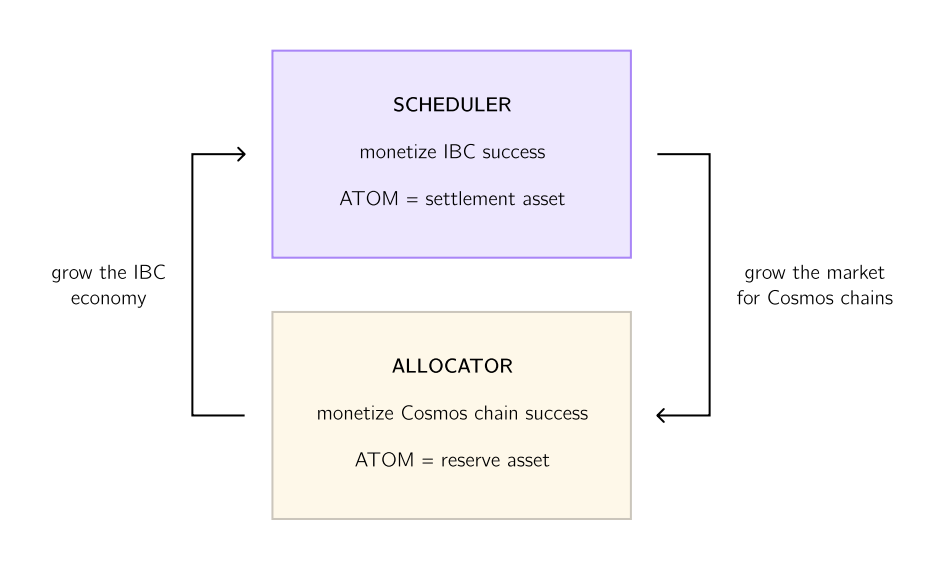
Thereby creating a cycle with the expected outcome that ATOM has renewed its role as the leading collateral in the entire Cosmos network. ATOM became stable in price as well as increased liquidity. The appeal of ATOM-denominated assets grows with increasing support and the ATOM market becomes more and more backwards. Cosmos Hub becomes the long-term holder of ecosystem assets and attracts valuable and potential projects to Cosmos. Continue to increase demand for the infrastructure services provided by Cosmos Hub and accelerate the development of the entire Cosmos network and Interchain as a whole.
Secure Scalability for Cosmos with Interchain Security and Liquid Staking
As mentioned in the previous article, Interchain Security will allow emerging blockchains to hire security services from Cosmos Hub as a more secure solution thereby opening a path to market quickly, more easily and cheaply, and drive innovation in the range of services.
Projects participating in the Cosmos Hub will also be naturally linked through the IBC, benefiting from the opportunities for collaboration and integration with other chains within Cosmos. Thereby creating a safe space to promote the development of application chains (appchains) suitable for the entire Cosmos ecosystem.
Cosmos Hub validators can secure new customer chains and exchange for staking rewards. Authorizers ($ATOM stakers) also receive a portion of this reward.
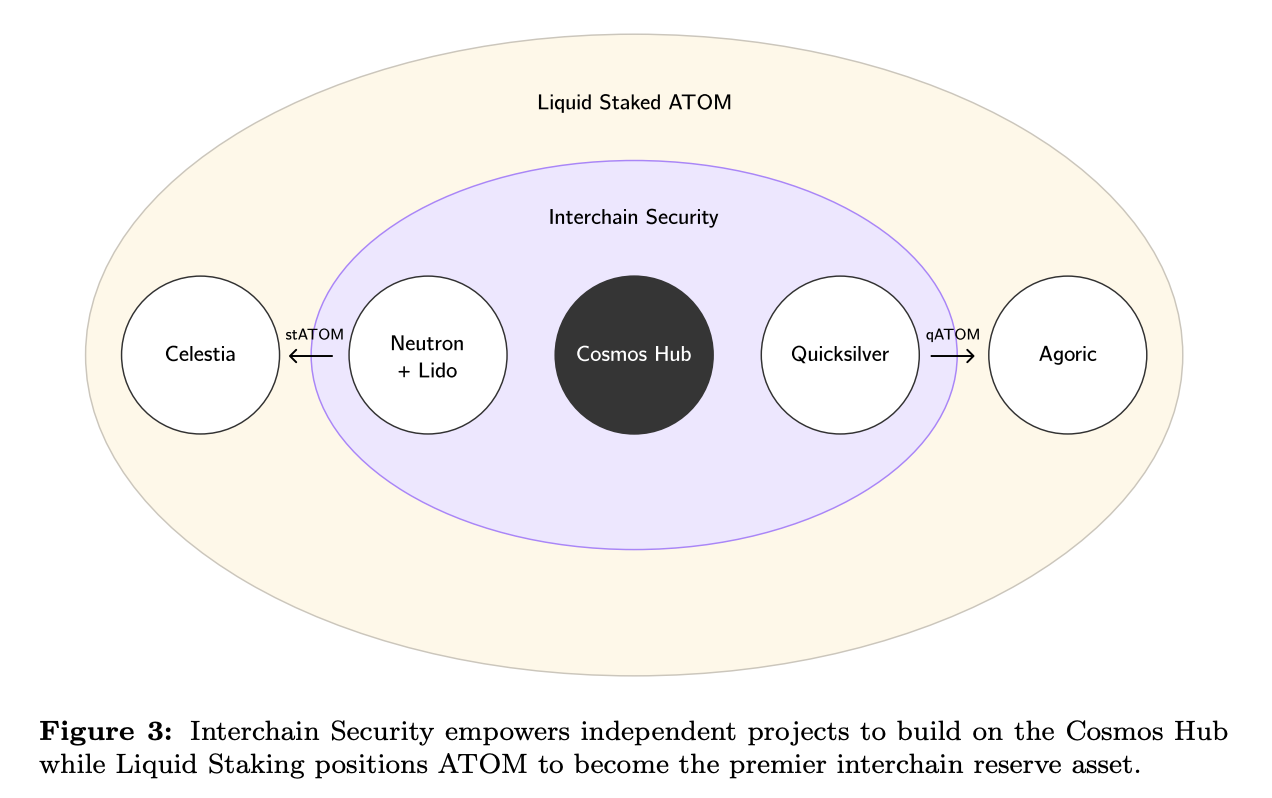
At the same time, staked assets can now be circulated across chains throughout IBC and used in other protocols as proxy assets (stATOM, qATOM as shown in the picture), increasing the utility of ATOM worldwide. Interchain also underpins the long-term security of the ecosystem.
Tokenomics
Cosmos is a decentralized network with independent blockchains. And within that vast ecosystem, Cosmos Hub is a blockchain specifically designed to connect other blockchains together. In Cosmos 1.0, ATOM's main function is to provide security for Cosmos Hub through a staking mechanism.
However, ATOM tokenomic has faced a wave of criticism from the community by creating an inflationary dynamic. The current monetary policy aims to balance security with liquidity by a staked supply of ATOM. If the staking ratio is lower than the target, the issuance of more ATOM will be implemented to encourage investors to stake to receive rewards and vice versa. According to data from Messari, if more than a quarter of the total supply is staked, the ATOM annual inflation rate will slowly decrease to 7%; less than ⅔, this index can reach 20%. By comparison, Ethereum's current inflation rate is only 0.19%, even before The Merge - switched to Proof-of-Stake, this rate was only 4.62% per year.
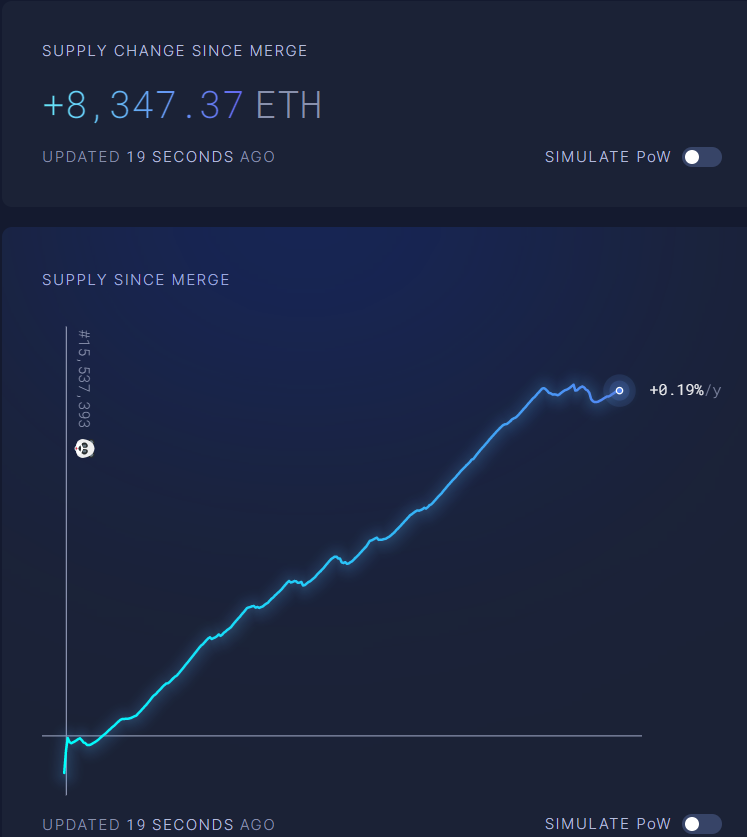
So, how does tokennomic 2.0 improve this? It will be divided into two main phases:
- Transition (Starts immediately after Cosmos transitions to new MP and lasts 36 months): This phase allows users a period of familiarization and participation in Interchain Security. The issuance of ATOM will be gradually increased to attract the initial amount of money for the Cosmos Hub Treasury. In the first month, 10 million ATOM (3.5% of total supply - if issued now, inflation rate up to 41.03%/year) will be issued and this amount will decrease gradually.
- Stable: After the end of phase 1, the amount of ATOM issued per month will drop to 300,000 - bringing the inflation rate down to 1% and maintained.
In the long term, the ATOM release chart will be a straight line instead of exponential ⇒ stability.
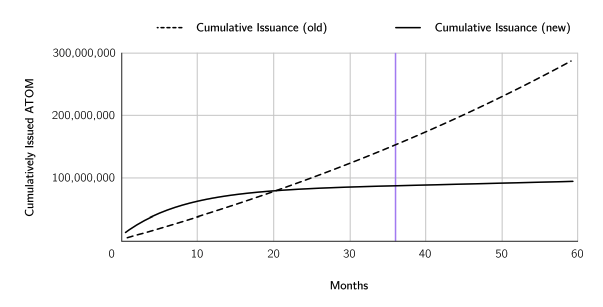
Thus, analyzing a bit from the perspective of an investor, the first 9 months investors should not own ATOM (only beneficial if staking) because the selling pressure will be quite large. But after this period, ATOM's growth momentum will be greater if the ecosystem expands ⇒ more demand increases value.
Regarding transaction fees, with the introduction of Interchain Security, the reward for ATOM stakers will increase. This fee can be collected in many other tokens and Cosmos Hub converts to a certain token, possibly ATOM or stablecoin prior to distribution. However, this has not been clarified in detail how the process is done.
Summary
With the proposed changes, Cosmos will become a more interoperable, decentralized and secure ecosystem in the future. However, these changes are mostly aimed at long-term benefits, which have not been able to solve ATOM's tokenomic inflation problem and in the short term, this coin may face selling pressure.


